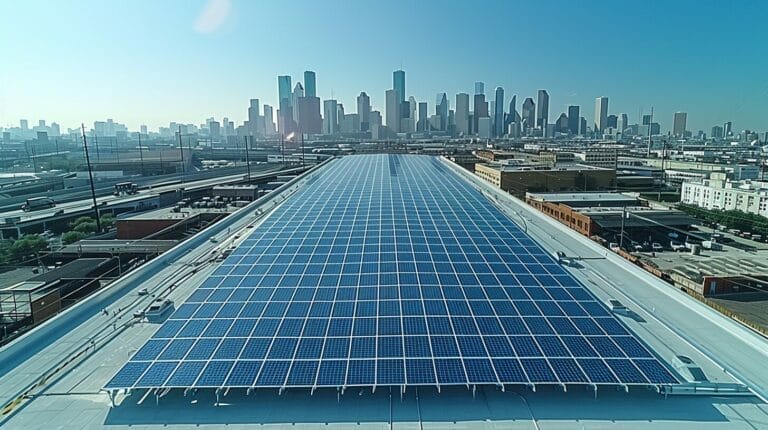How to Throw Away LED Light Bulbs: A Simple Guide
When it comes to disposing of LED light bulbs, many of us might not be entirely sure of the best practices. We often wonder if they should be tossed in the regular trash or if there’s a specific process we need to follow. It’s important to handle these bulbs correctly to minimize environmental impact and avoid potential hazards. So, how do we go about it?
Let’s walk through the necessary steps to make sure we’re disposing of our LED bulbs in a way that’s both safe and environmentally friendly.
Key Takeaways
- Safely remove the LED bulb from the fixture to avoid breakage.
- Check local recycling programs for specific LED bulb disposal guidelines.
- Place the LED bulb in a protective container before transporting.
- Drop off the protective container at a designated recycling site.
- Consider retailer or manufacturer recycling programs for convenient LED bulb disposal.
Understanding the Importance of Properly Disposing LED Light Bulbs

In our environmentally conscious world, we must consider the environmental impact of our lighting choices. LED bulbs contain toxic materials such as lead and arsenic, which can pose serious risks if not managed correctly. By understanding and implementing proper disposal techniques, we can lessen the hazardous waste in our landfills.
Step-by-Step Guide to Dispose LED Light Bulbs Properly

To ensure we dispose of LED light bulbs properly, follow these instructions:
- Safely remove the bulb from its fixture.
- Determine how to dispose of the LED bulbs in your area.
- Place the bulbs in a sturdy, protective container to avoid breakage during transport.
- Drop off the container at the designated site.
Tips to Recycle LED Light Bulbs and Other Types of Light Bulbs

Here are some practical tips for recycling LED light bulbs and other types of bulbs:
- Many local recycling programs accept LED bulbs.
- Retailers like Home Depot and Lowe’s offer recycling programs for CFL bulbs.
- Incandescent light bulbs and halogen bulbs can often be recycled through these retailers.
- Fluorescent tubes require cautious disposal and often have specific collection days.
Dealing with Broken LED Bulbs and Fluorescent Light Tubes

When an LED bulb or fluorescent light tube breaks, it’s crucial to act quickly to minimize potential hazards. First, let’s make sure everyone in the area is safe by clearing the room to avoid inhaling any particles. We should also open windows to ventilate the space.
Using gloves, carefully collect the larger pieces of broken bulbs and tubes, placing them in a sturdy container. For smaller shards and dust, sticky tape works wonders to pick them up efficiently.
Next, we need to dispose of the collected debris properly. Broken LED bulbs and fluorescent tubes should never be thrown in the regular trash due to their hazardous materials. Instead, look for local disposal programs or hazardous waste facilities that accept these items. Many communities have designated drop-off points for such waste to ensure it’s handled safely and responsibly.
Creative Ways to Reuse and Repurpose Old LED String and Holiday Lights

Whether it’s upcycling or giving them new life, there are numerous creative ways we can reuse and repurpose old LED string and holiday lights.
One innovative approach is to incorporate them into various creative DIY projects. For instance, we can transform LED light strings into enchanting outdoor lanterns by placing them inside mason jars. This not only repurposes old LED lights but also adds a magical glow to our garden spaces.
Another idea is to weave holiday LED lights into wall art. By mounting them on a canvas in the shape of a tree, heart, or any design we fancy, we can create a stunning, illuminated piece of décor.
If we want to extend the life of our lights, let’s consider repairing them. Often, a single broken bulb can be the culprit, and replacing it can bring the entire string back to life.
For those of us who mightn’t be the DIY type, donating or selling functioning LED lights is a fantastic way to give them a second life. Many community centers, schools, and thrift stores would gladly accept them, ensuring they brighten someone else’s space.
Let’s remember, innovation doesn’t always mean new—it can also mean renewed.
Conclusion
To wrap up, let’s commit to disposing of our LED light bulbs responsibly. By following the steps to safely remove, research, and recycle, we can make a significant impact on reducing hazardous waste.
Don’t forget to handle and transport the bulbs carefully to avoid breakage. Together, we can contribute to a cleaner environment and guarantee a brighter, more sustainable future.
So, let’s take action now and make a difference!
Frequently Asked Questions
How do I properly dispose of LED light bulbs?
LED light bulbs can be safely discarded with regular household waste. They do not contain mercury, making them non-toxic and safe for disposal in the trash.
Can I recycle LED light bulbs?
While LED bulbs are recyclable, most local recycling centers do not have specific facilities for recycling them. It is recommended to check with your local waste collection services for proper disposal options.
Are LED light bulbs considered hazardous waste?
No, LED light bulbs are not considered hazardous waste as they do not contain toxic materials like mercury. They can be disposed of in regular household garbage.
How should I handle broken LED light bulbs?
If an LED light bulb breaks, handle the cleanup carefully to avoid injury. Use gloves and sweep up the broken glass and components, disposing of them in a sealed container before throwing them in the trash.
Do LED light bulbs need to be recycled?
While LED light bulbs are recyclable, they do not necessarily need to be recycled like certain other types of bulbs that contain hazardous materials. However, it is still recommended to check local recycling options for proper disposal.






